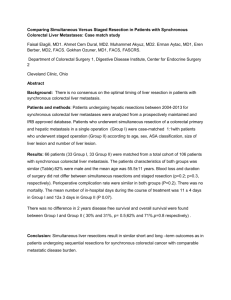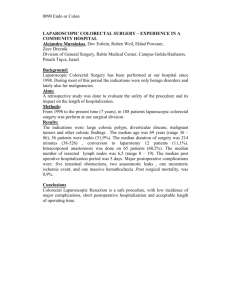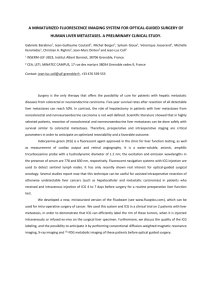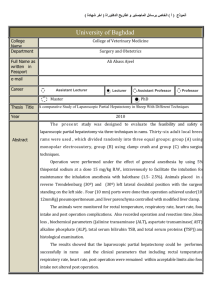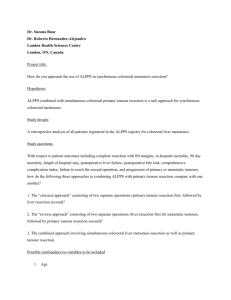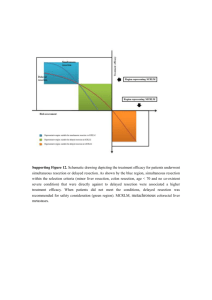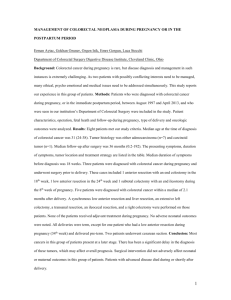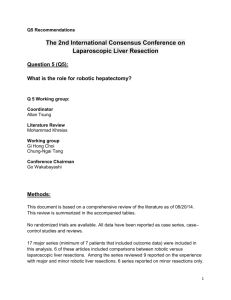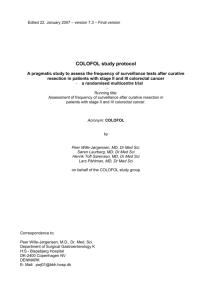Akin_Onder_combine_ACS_
advertisement
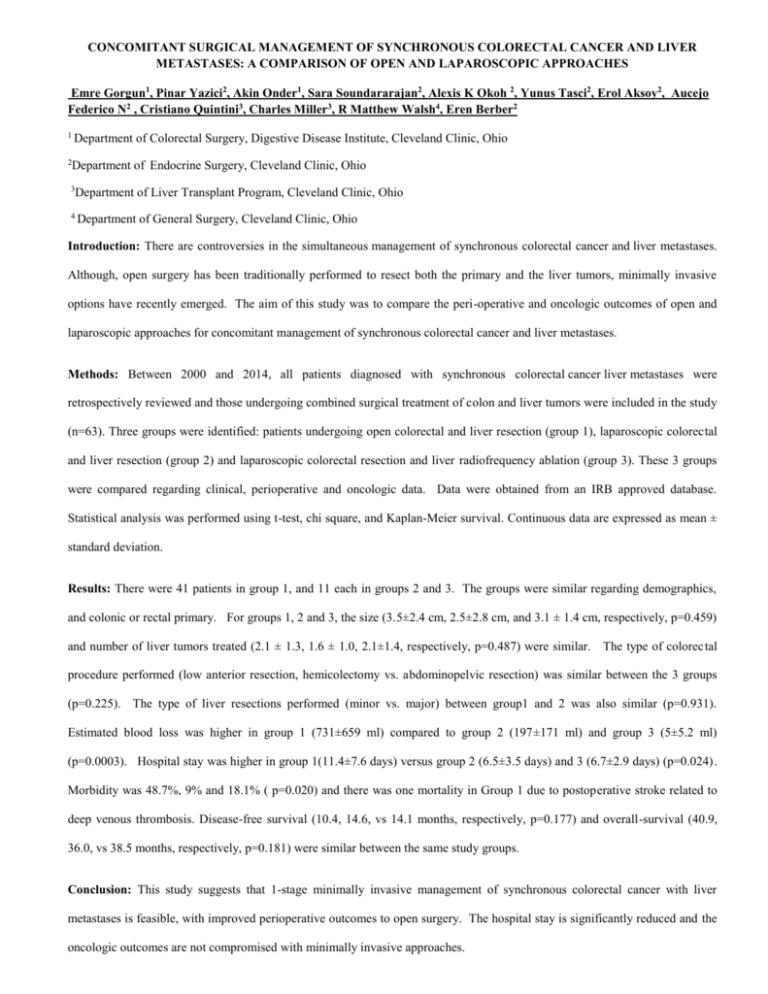
CONCOMITANT SURGICAL MANAGEMENT OF SYNCHRONOUS COLORECTAL CANCER AND LIVER METASTASES: A COMPARISON OF OPEN AND LAPAROSCOPIC APPROACHES Emre Gorgun1, Pinar Yazici2, Akin Onder1, Sara Soundararajan2, Alexis K Okoh 2, Yunus Tasci2, Erol Aksoy2, Aucejo Federico N2 , Cristiano Quintini3, Charles Miller3, R Matthew Walsh4, Eren Berber2 1 Department of Colorectal Surgery, Digestive Disease Institute, Cleveland Clinic, Ohio 2 Department of Endocrine Surgery, Cleveland Clinic, Ohio 3 Department of Liver Transplant Program, Cleveland Clinic, Ohio 4 Department of General Surgery, Cleveland Clinic, Ohio Introduction: There are controversies in the simultaneous management of synchronous colorectal cancer and liver metastases. Although, open surgery has been traditionally performed to resect both the primary and the liver tumors, minimally invasive options have recently emerged. The aim of this study was to compare the peri-operative and oncologic outcomes of open and laparoscopic approaches for concomitant management of synchronous colorectal cancer and liver metastases. Methods: Between 2000 and 2014, all patients diagnosed with synchronous colorectal cancer liver metastases were retrospectively reviewed and those undergoing combined surgical treatment of colon and liver tumors were included in the study (n=63). Three groups were identified: patients undergoing open colorectal and liver resection (group 1), laparoscopic colorectal and liver resection (group 2) and laparoscopic colorectal resection and liver radiofrequency ablation (group 3). These 3 groups were compared regarding clinical, perioperative and oncologic data. Data were obtained from an IRB approved database. Statistical analysis was performed using t-test, chi square, and Kaplan-Meier survival. Continuous data are expressed as mean ± standard deviation. Results: There were 41 patients in group 1, and 11 each in groups 2 and 3. The groups were similar regarding demographics, and colonic or rectal primary. For groups 1, 2 and 3, the size (3.5±2.4 cm, 2.5±2.8 cm, and 3.1 ± 1.4 cm, respectively, p=0.459) and number of liver tumors treated (2.1 ± 1.3, 1.6 ± 1.0, 2.1±1.4, respectively, p=0.487) were similar. The type of colorec tal procedure performed (low anterior resection, hemicolectomy vs. abdominopelvic resection) was similar between the 3 groups (p=0.225). The type of liver resections performed (minor vs. major) between group1 and 2 was also similar (p=0.931). Estimated blood loss was higher in group 1 (731±659 ml) compared to group 2 (197±171 ml) and group 3 (5±5.2 ml) (p=0.0003). Hospital stay was higher in group 1(11.4±7.6 days) versus group 2 (6.5±3.5 days) and 3 (6.7±2.9 days) (p=0.024) . Morbidity was 48.7%, 9% and 18.1% ( p=0.020) and there was one mortality in Group 1 due to postoperative stroke related to deep venous thrombosis. Disease-free survival (10.4, 14.6, vs 14.1 months, respectively, p=0.177) and overall-survival (40.9, 36.0, vs 38.5 months, respectively, p=0.181) were similar between the same study groups. Conclusion: This study suggests that 1-stage minimally invasive management of synchronous colorectal cancer with liver metastases is feasible, with improved perioperative outcomes to open surgery. The hospital stay is significantly reduced and the oncologic outcomes are not compromised with minimally invasive approaches.
